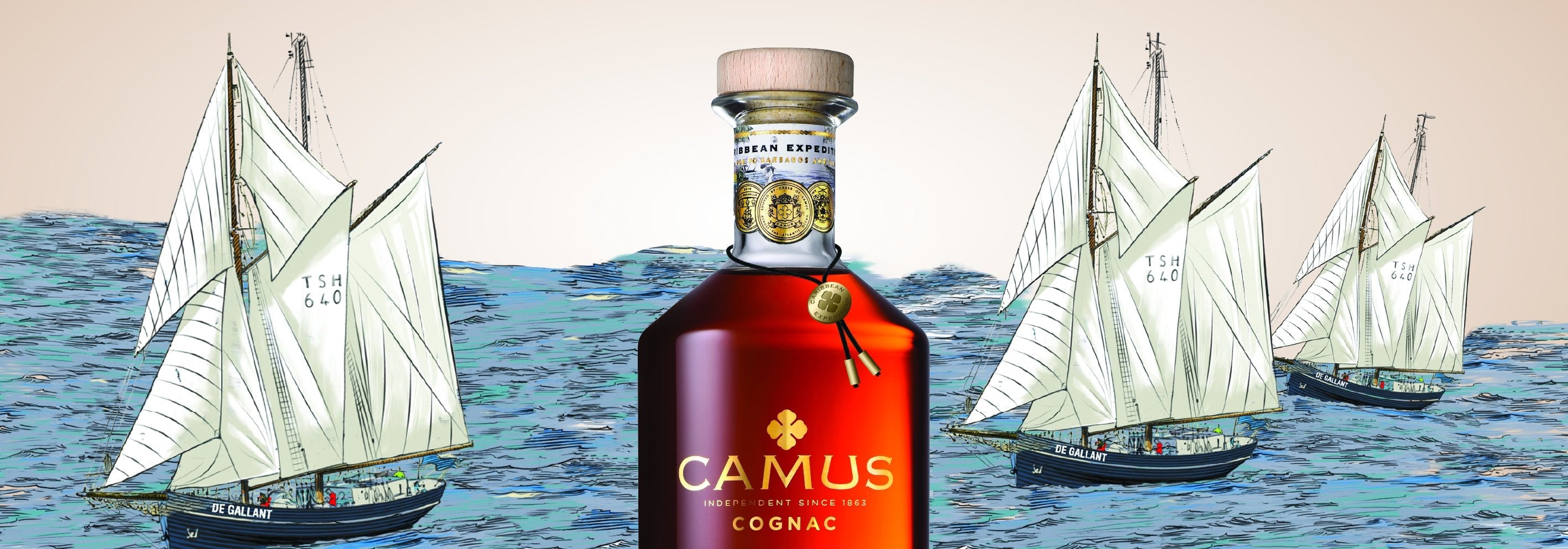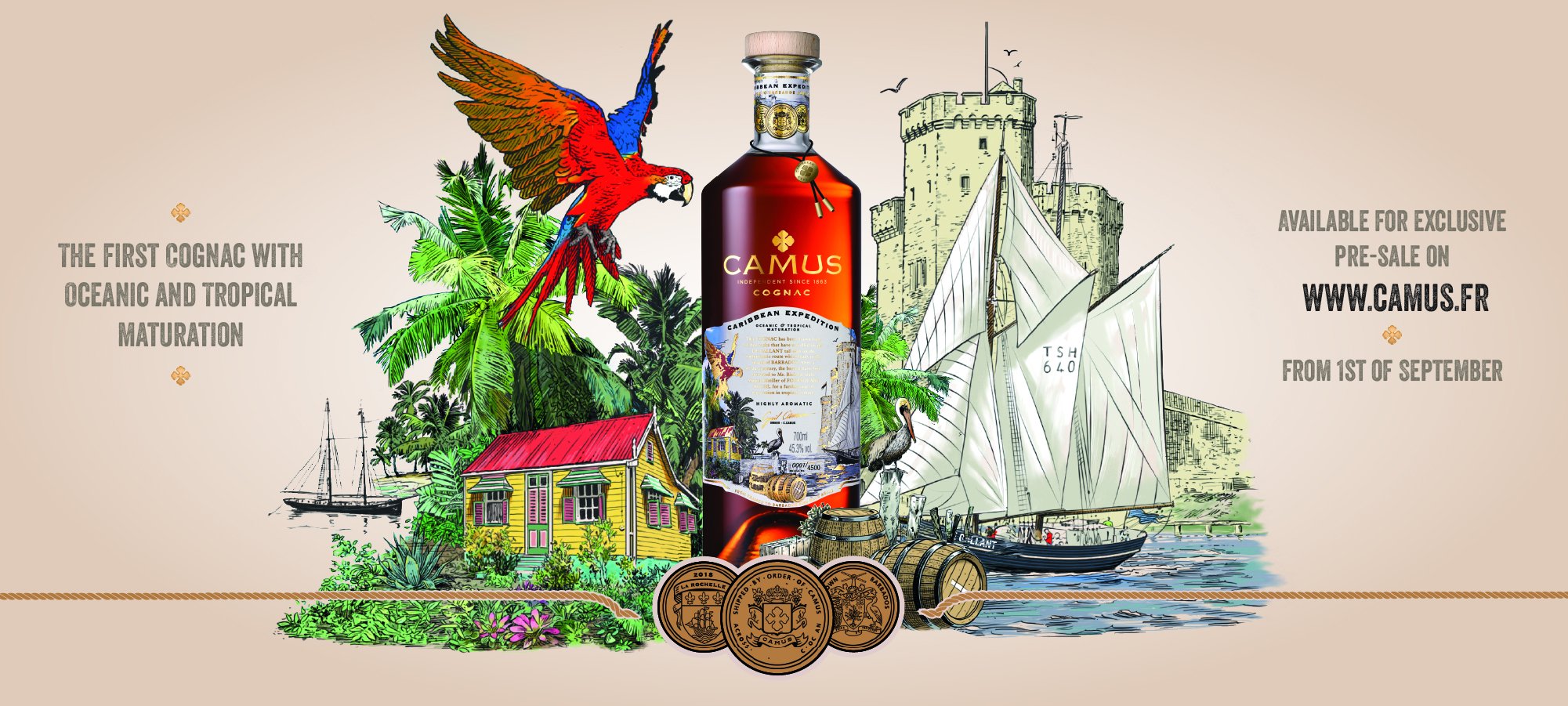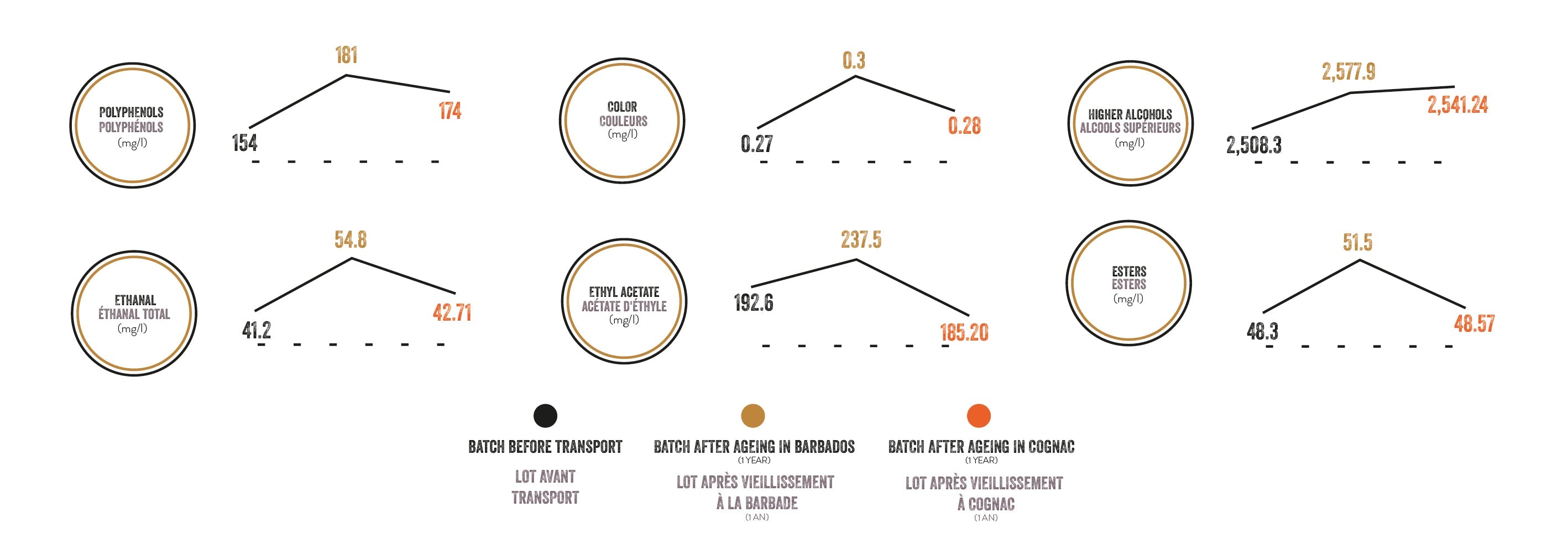
Why Caribbean Expedition is a primacy in Cognac category (Ep. 1/2)
The secrets behind Oceanic Maturation
The unique maturation of CAMUS Caribbean Expedition Cognac is the result of two distinctive steps highly influencing its aromatic profile, happening over the course of a year and a half between the Atlantic Ocean and the island of Barbados.
The choice of transporting the casks on a tall ship sailing on the transatlantic route which leads to Barbados finds its reasons in the study of historical documents. During the whole of the 18th and a good part of the 19th century, the Cognac trade around the world was made by ship, with oak barrels leaving their cellars in France and reaching their final destinations after months of sailing. By the end of the century, the introduction of glass bottles and specific AOC rules led to a completely new commerce for the Cognac Houses. This change effectively cut out the period of “sea maturation” to which every Cognac was exposed before and which would undeniably influence the evolution of the liquid after the journey.
During the 45 days of navigation to the Caribbean, the 10 casks of CAMUS Cognac were exposed to multiple environmental factors, impacting the process of maturation of the liquid. These special conditions enhanced the intensely aromatic profile of the Cognac through some very specific reactions which would have happened at a much slower pace in mainland weather conditions.
In particular :
Motion
The continuous shaking and stirring of the Cognac inside the barrel, caused by the movement of the ship while sailing, amplified the contact between each molecule of the liquid and the wood staves, accelerating the extraction of aromatic components from the barrel.
Oceanic climate
All the chemical reactions which are part of the maturation process were accelerated by heat. As the ship crossed different climatic areas, entering into very warm zones, some of the crucial processes of maturation, such as oxidation with formation of aldehydes, had the chance to happen sooner.
Air pressure variation
The continuous change in the atmospheric pressure increased the mechanic effect of contraction and expansion of the oak wood staves, accelerating the process of oxygen consumption. While most of the 10 casks were loaded in the hold of the ship, two of these (no.5 and no.8) were deliberately tied down on the bow, in the open air, to maximize the exposure to external atmospheric agents.
Stay connected for the next post, as we reveal the secrets behind Tropical Maturation, through a comparative analysis of Cognacs aged in different climatic areas.




